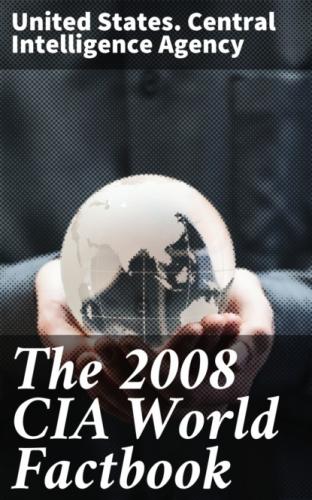GUZMAN Aldaz]; Roldosist Party or PRE [Abdala BUCARAM Ortiz,
director]; Social Christian Party or PSC [Pascual DEL CIOPPO];
Socialist Party - Broad Front or PS-FA [Gustavo AYALA Cruz]
Political pressure groups and leaders:
Confederation of Indigenous Nationalities of Ecuador or CONAIE
[Marlon SANTI, president]; Coordinator of Social Movements or CMS
[F. Napoleon SANTOS]; Federation of Indigenous Evangelists of
Ecuador or FEINE [Marco MURILLO, president]; National Federation of
Indigenous Afro-Ecuatorianos and Peasants or FENOCIN [Pedro DE LA
CRUZ, president]
International organization participation:
CAN, FAO, G-77, IADB, IAEA, IBRD, ICAO, ICC, ICCt, ICRM, IDA, IFAD,
IFC, IFRCS, IHO, ILO, IMF, IMO, Interpol, IOC, IOM, IPU, ISO, ITSO,
ITU, ITUC, LAES, LAIA, Mercosur (associate), MIGA, MINURCAT,
MINUSTAH, NAM, OAS, OPANAL, OPCW, OPEC, PCA, RG, UN, UNASUR, UNCTAD,
UNESCO, UNHCR, UNIDO, Union Latina, UNMIL, UNMIS, UNOCI, UNWTO, UPU,
WCL, WCO, WFTU, WHO, WIPO, WMO, WTO
Diplomatic representation in the US:
chief of mission: Ambassador Luis Benigno GALLEGOS Chiriboga chancery: 2535 15th Street NW, Washington, DC 20009 telephone: [1] (202) 234–7200 FAX: [1] (202) 667–3482 consulate(s) general: Atlanta, Boston, Chicago, Dallas, Denver, Houston, Jersey City (New Jersey), Los Angeles, Miami, New Orleans, New York, San Francisco, San Juan (Puerto Rico), Washington, DC
Diplomatic representation from the US:
chief of mission: Ambassador Heather HODGES embassy: Avenida Avigiras E12–170 y Avenida Eloy Alfaro, Quito mailing address: Avenida Guayacanes N52–205 y Avenida Avigiras telephone: [593] (2) 398–5000 FAX: [593] (2) 398–5100 consulate(s) general: Guayaquil
Flag description:
three horizontal bands of yellow (top, double width), blue, and red with the coat of arms superimposed at the center of the flag; similar to the flag of Colombia, which is shorter and does not bear a coat of arms
Economy
Ecuador
Economy - overview:
Ecuador is substantially dependent on its petroleum resources, which have accounted for more than half of the country's export earnings and one-fourth of public sector revenues in recent years. In 1999/2000, Ecuador suffered a severe economic crisis, with GDP contracted by more than 6%, with a significant increase in poverty. The banking system also collapsed, and Ecuador defaulted on its external debt later that year. In March 2000, Congress approved a series of structural reforms that also provided for the adoption of the US dollar as legal tender. Dollarization stabilized the economy, and positive growth returned in the years that followed, helped by high oil prices, remittances, and increased non-traditional exports. From 2002–06 the economy grew 5.5%, the highest five-year average in 25 years. The poverty rate declined but remained high at 38% in 2006. In 2006 the government of Alfredo PALACIO (2005–07) seized the assets of Occidental Petroleum for alleged contract violations and imposed a windfall revenue tax on foreign oil companies, leading to the suspension of free trade negotiations with the US. These measures, combined with chronic underinvestment in the state oil company, Petroecuador, led to a drop in petroleum production in 2007. PALACIO's successor, Rafael CORREA, raised the specter of debt default - but Ecuador has paid its debt on time. He also decreed a higher windfall revenue tax on private oil companies, then sought to renegotiate their contracts to overcome the debilitating effect of the tax. This generated economic uncertainty; private investment has dropped and economic growth has slowed significantly.
GDP (purchasing power parity):
$98.71 billion (2007 est.)
GDP (official exchange rate):
$44.18 billion (2007 est.)
GDP - real growth rate:
2% (2007 est.)
GDP - per capita (PPP):
$7,200 (2007 est.)
GDP - composition by sector:
agriculture: 6.7% industry: 35.1% services: 58.2% (2007 est.)
Labor force:
4.51 million (urban) (2007 est.)
Labor force - by occupation:
agriculture: 8% industry: 24% services: 68% (2001)
Unemployment rate:
8.8% (2007 est.)
Population below poverty line:
38.3% (2006)
Household income or consumption by percentage share:
lowest 10%: 2% highest 10%: 35% note: data for urban households only (October 2006)
Distribution of family income - Gini index:
46 note: data are for urban households (2006)
Investment (gross fixed):
21.9% of GDP (2007 est.)
Budget:
revenues: $13.46 billion expenditures: planned $11.96 billion (2007 est.)
Fiscal year:
calendar year
Public debt:
33.1% of GDP (2007 est.)
Inflation rate (consumer prices):
2.3% (2007 est.)
Central bank discount rate:
10.72% (31 December 2007)
Commercial bank prime lending rate:
12.08% (31 December 2007)
Stock of money:
$4.395 billion (31 December 2007)
Stock of quasi money:
$7.974 billion (31 December 2007)
Stock of domestic credit:
$8.926 billion (31 December 2007)
Agriculture - products:
bananas, coffee, cocoa, rice, potatoes, manioc (tapioca), plantains, sugarcane; cattle, sheep, pigs, beef, pork, dairy products; balsa wood; fish, shrimp
Industries:
petroleum, food processing, textiles, wood products, chemicals
Industrial production growth rate:
1.4% (2007 est.)
Electricity - production:
14.84 billion kWh (2006 est.)
Electricity - consumption:
12.9 billion kWh (2006 est.)
Electricity - exports:
38.53 million kWh (2006 est.)
Electricity - imports:
861 million kWh (2006 est.)
Electricity - production by source:
fossil fuel: 81% hydro: 19% nuclear: 0% other: 0% (2001)
Oil - production:
511,600 bbl/day (2007 est.)
Oil - consumption:
160,500 bbl/day (2006 est.)
Oil
